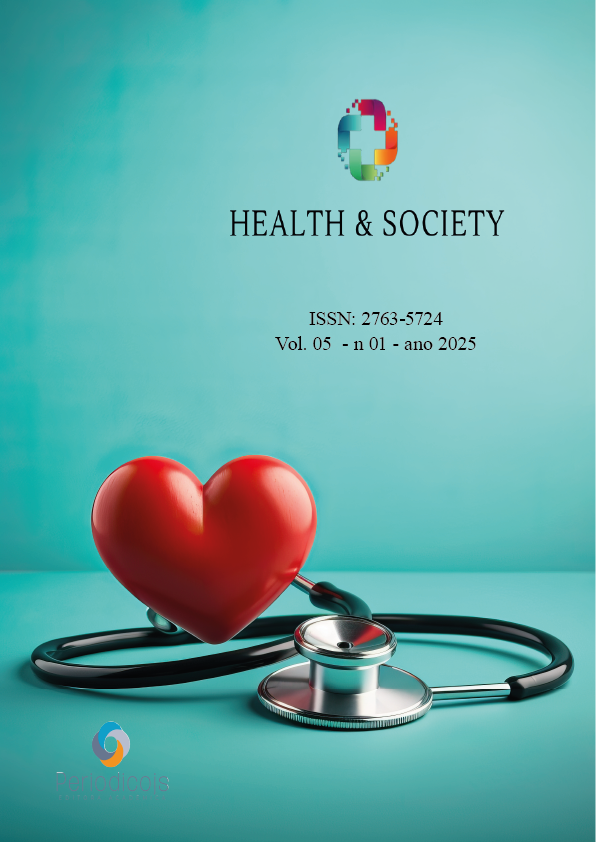Abstract
Dermatological diseases are one of the main causes of people seeking care in Primary Health Care (PHC), often being treated by non-specialized doctors, which leads to an increase in unnecessary referrals to dermatologists and an overload on specialized services. This scenario is, in part, caused by the limited academic training of professionals, affecting their ability to diagnose and treat dermatological conditions appropriately. Teledermatology appears as a promising solution to optimize care, using information and communication technologies to facilitate remote diagnosis, allowing PHC doctors to receive reports from dermatologists within 72 hours, without the need for unnecessary travel. Objective: To report the experience of the Teledermatology joint effort held at Policlínica Barral Y Barral in the municipality of Rio Branco in the State of Acre, aimed at reducing waiting times and improving access to dermatological care. Method: This is a literature review study in the form of a professional experience report with critical analysis. The data was collected from medical and administrative records that provided the necessary information to carry out the experience and its results. Results: During the joint effort, 200 PHC patients were expected, with 142 treated, 128 exams validated and 50 cases treated directly in PHC, avoiding unnecessary referrals. The results showed a predominance of injuries classified as green (secondary) and blue (primary care) risk, with some serious cases, such as skin cancer, being referred to specialized care. Conclusion: Teledermatology proved to be effective in speeding up diagnosis and treatment, improving the resolution of PHC and optimizing public resources. The experience highlighted the importance of training PHC professionals to diagnose and treat dermatological diseases, highlighting the need to integrate telemedicine into health practices, contributing to more efficient and accessible care.
References
BERNARDES, Caroline. “Diagnóstico e Condutas Dermatológicas Em Uma Unidade Básica De Saúde.” Revista Brasileira de Educação Médica n 39: n. pag. 2. JanMar 2015. Disponível em <https://doi.org/10.1590/1981-52712015v39n1e02782013> Acesso em 05 de jan. 2025.
BAETA, Isabela Guimaraes Ribeiro (org.). Manual de Dermatologia na Atenção Básica. 2. ed. Salvador, BA: Editora Sanar, 2021, Pg. 17. Disponível em: Acesso 23 jan. 2025
Telessaúde UFSC, Telemedidina Santa Catarina, Teledermatologia, jun. 2024. Disponível em: < Teledermatologia - Núcleo Telessaúde UFSC> Acesso em 05 de jan. 2025.
PANTOJA, Jessica. Corrêa. Dermatologia na Atenção Primária no Brasil: O processo de formação dos médicos generalistas. Disponível em: <https://www.researchgate.net/publication/378476493. Acesso em: 09/01/2025
UBS.MED.BR. Infraestrutura Híbrida Acesso em: 05/12/024 às 14:00h.
Teledermatologia. Facilitando o acesso à dermatologia com protagonismo da APS, redução de filas e priorização dos casos graves. Disponível em Acesso em: 05/12/24 às 16:20h.
Portal Telemedicina. O que é teledermatologia e quais as vantagens - Portal Telemedicina < O que é teledermatologia e quais as vantagens - Portal Telemedicina> Acesso em: 05/12/24, as 17:25hs.
RAMIREZ-CORNEJO, Cristian et al. Implementação rápida da teledermatologia durante a pandemia de COVID-19: lições aprendidas com um departamento acadêmico de Dermatologia. Rev. méd. Chile, Santiago, v. 149, n. 10, p. 1467-1472, Santiago Oct. 2021. Disponível em: <http://dx.doi.org/10.4067/s003498872021001001467>. acessado em Dez 05 2024.
YARAK, Samira; RUIZ, Evandro Eduardo Seron e PISA, Ivan Torres. Rev. bras. educ. med. 41 (2). São Paulo, Abr-Jun 2017. A Teledermatologia na Prática Médica. Disponível em:< https://doi.org/10.1590/1981-52712015v41n2RB20160042 linkcopiar>. Acesso em 07/12/24.
SILVA, Cristiana Silveira e SOUZA, Murilo Barreto. An. Bras. Dermatol. 84 (5), Out 2009. Teledermatologia: correlação diagnóstica em serviço primário de saúde. Dispinível em: <https://doi.org/10.1590/S0365-05962009000500007> Acesso em: 07/12/24.
SACHETT JAG, GONÇALVES ICM, SANTOS WOM. Relato de experiência das contribuições da telessaúde em comunidades ribeirinhas do Amazonas na pandemia. Rev Bras Enferm. 2022; 75(Suppl 2): e20210820. Disponível em <https://doi.org/10.1590/0034-7167-2021-0820pt> Acesso 09 de jan. 2025.
NUNES, Daniel Holthausen; ROSA, Ariel Cordova; SOARES, Barbara Telino; WAGNER, Harley Miguel. Manual – classificação de risco para dermatologia. INCoD – Instituto para Convergência Digital. INCoD/TELEMED.05.2020.P. Versão 6.1. Setembro – 2020. Disponível em <(PDF) Manual - Classificação de Risco para Dermatologia> Acesso em 12 de jan. 2025.

This work is licensed under a Creative Commons Attribution 4.0 International License.
Copyright (c) 2025 Carlos Renne Silva de Castro, Miracelia dos Santos da Silva Castro, Douglas José Angel





